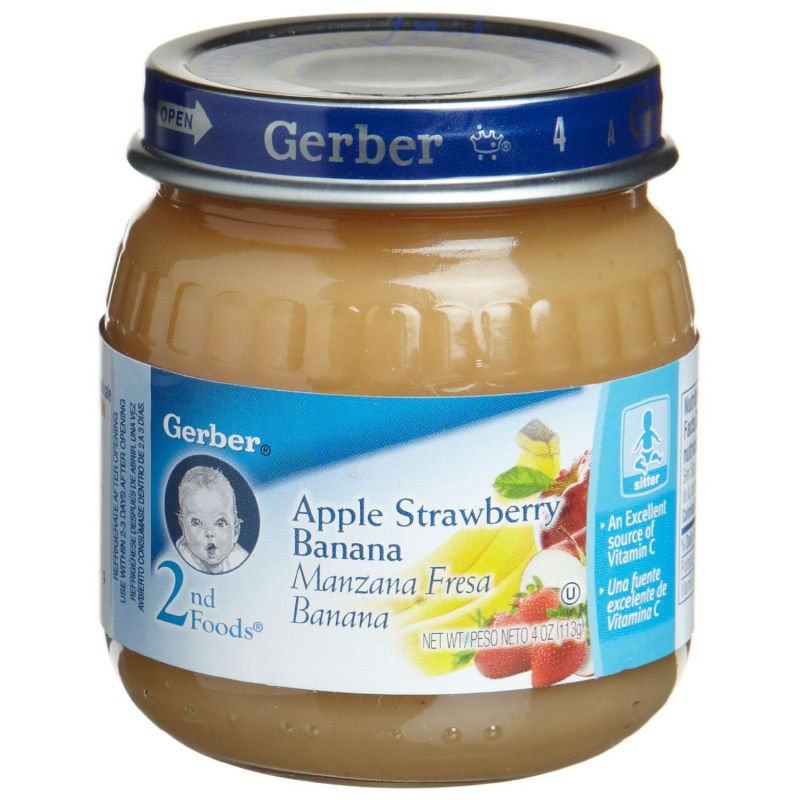Best baby foods to make at home
10 Easy Homemade Baby Food Ideas (No-Cook, Super Fast, Stage 1)
Learn how to make the EASIEST homemade baby food recipes (stage 1) for your little one with these super simple no-cook ideas. Plus: I have the best tips for making them ahead and freezing them so you can batch cook and simplify your days!
Homemade Baby Food
As a mom to three kids, I know firsthand how the urge to make homemade baby food can be both exciting and a little daunting. And if you have a busy schedule or other kids in the house, finding the time to actually do it can seem impossible. But, there are so many healthy foods that you can transform into stage 1 baby food purees with hardly any work or special equipment at all!
TIP: I use a regular blender for all of these recipes, so you don’t need to buy a special baby food maker unless you want to.
Baby Food Recipes for 6, 7, and 8 Month Old Babies
These homemade baby food ideas are designed for younger babies who are still eating thinner purees, but you can of course use them for older babies and toddlers too. Each can be served as is, or you can combine more than one together to create new flavors if you’re feeling creative!
TIP: If you want to add fat or protein to any of these fruit or veggie purees, simply stir in a little whole milk yogurt, coconut cream, or Avocado Puree.
Best Way to Make Baby Food
I’ve found that the easiest and most approachable way to make baby food is to simply use a blender. With fresh ingredients and a little water, breastmilk, or formula to thin it as needed, you can easily make your baby meals without investing in equipment you may not use very long.
TIP: You’ll want to start with at least 1 cup of any base ingredient to ensure that there’s enough in the blender to fully blend up.
Tools You Need to Make Homemade Baby Food
To make these baby food recipes you’ll need:
- Blender (you could also use an immersion blender if yours is very strong)
- Water, formula, or breastmilk to thin as needed
- Knife for chopping produce
- Spoon
- Bowls
- Ice cube tray
- Freezer bags for storage
- Baby food storage containers
Stage 1 Baby Food
These baby foods are meant for early eaters as they are typically very thin and easy for a baby to move around in their mouths. I follow the recommendations to wait until 6 months to start solids, so I personally don’t worry excessively about this distinction as I like babies to experience some texture in their purees. (The ones you find at the store are low allergenic foods and are meant for 4+ months.)
I follow the recommendations to wait until 6 months to start solids, so I personally don’t worry excessively about this distinction as I like babies to experience some texture in their purees. (The ones you find at the store are low allergenic foods and are meant for 4+ months.)
Stage 2 Baby Food
These baby foods are typically a little bit thicker, sometimes include more than one ingredient, and offer a wider variety of ingredients. Most babies are ready for these sorts of purees around 7-8 months, or once they’ve mastered thinner purees. (Again, since I like to do a combined baby feeding approach with both baby led weaning and purees, I don’t worry too much about following the calendar to decide when to introduce these.)
TIP: As a backup to my homemade baby foods, I love the options from Amara Organic Baby Food (paid affiliate link) since you simply need to stir it together with breast milk, formula, or water and it’s ready to serve.
And now, for my ten go-to homemade baby food purees that you don’t even need to cook!
1.
 Avocado Puree
Avocado PureeTo make avocado puree for a baby, you just need a fresh avocado, a blender, and some lemon juice if you plan to store it for later. I sometimes even do this with just a fork if the avocado is super soft! It’s a perfect way to introduce a low allergenic food that’s rich in healthy fats.
TIP: Get the full recipe for Avocado Puree here.
2. Bean Puree
Baby’s early foods don’t have to be all one food group and beans are a great food to have in the mix. You can do this easy bean puree with chickpeas, pinto beans, black beans, or even white beans, thinning it as needed with water, formula, or breastmilk. This is a great puree to mix with a little sweet potato or butternut squash.
TIP: Get the full recipe for Bean Puree here.
3. Blueberry Puree
Using fresh or frozen blueberries, this easy berry puree is loaded with fresh flavor and antioxidants. It’s delicious on its own or stirred into plain whole milk yogurt or baby oatmeal. (Note that it thickens up as it sits in the fridge, so you’ll need to stir it well to serve.)
(Note that it thickens up as it sits in the fridge, so you’ll need to stir it well to serve.)
TIP: Get the full recipe for Blueberry Puree here.
4. Kiwi Puree
With a bright flavor, this puree is great for babies who seem to love flavor—and it’s a fun one to make and store for later. You’ll want to make sure that you choose very ripe and sweet kiwi and taste it before you make the puree to ensure that it’s not too tart. (If it seems tart, you can mix with banana or applesauce.)
TIP: Get the full recipe for Kiwi Puree here.
5. Mango Puree
Using fresh or thawed frozen mango, this baby puree blends up in seconds. It’s bright, flavorful, and a great source of immune-boosting vitamins. Taste your mango to be sure that it’s sweet and not too tart. (If it’s tart, you can add Applesauce or ripe Banana Puree.)
TIP: Get the full recipe for Mango Puree here.
6. Peach Puree
Turn fresh or frozen and thawed peach slices into a super smooth Stage 1 baby food with this easy blender method. You’ll want to strain out the skin since it’s hard to blend up smooth, even with a high powered blender, but that’s so easy to do! This baby food recipe is a nice alternative to applesauce.
You’ll want to strain out the skin since it’s hard to blend up smooth, even with a high powered blender, but that’s so easy to do! This baby food recipe is a nice alternative to applesauce.
TIP: Get the full recipe for Peach Puree here.
7. Whipped Peanut Butter
This may not have occurred to you, but whipped peanut butter is a great baby food! This is a perfect way to introduce baby to peanut butter and to offer it safely there after. You just need to stir water into unsweetened creamy peanut butter until it forms a whipped consistency like yogurt. It’s smooth, not too sticky, and packed with protein.
TIP: Get the full scoop on introducing peanuts to baby here.
8. Pineapple Puree
Blend up fresh or frozen pineapple chunks into a tropical baby food puree that’s smooth and creamy. This is yummy on its own or paired with whole milk plain yogurt. Taste your pineapple to ensure that it’s not too tart. (If it’s tart, you can add Applesauce or ripe Banana Puree. )
)
TIP: Get the full recipe for Pineapple Puree here.
9. Strawberry Puree
Fresh strawberries blend up into a perfectly smooth homemade puree without the need for any additional liquid. You can serve this as is, or mix with applesauce if desired. The flavor of your berries will determine the flavor of your puree, so be sure to taste them for sweetness.
TIP: Get the full recipe for Strawberry Puree here.
10. Banana Puree
Ripe bananas make great homemade baby food with the help of just a blender. This is a super simple baby food to make at home and it’s easy to digest as a Stage 1 baby food. Use ripe bananas with brown spots to ensure that the puree tastes sweet and is easy for baby to digest.
TIP: Get the full recipe for Banana Puree here.
Homemade Baby Food Storage
The easiest way to store homemade baby food is to add fresh purees to an ice cube tray and freeze. Once frozen, simply pop out the cubes and store in labeled freezer bags for up to 3 months. These are a perfect way to make it easy to send homemade baby food to daycare or to simply get ahead for the coming week.
Once frozen, simply pop out the cubes and store in labeled freezer bags for up to 3 months. These are a perfect way to make it easy to send homemade baby food to daycare or to simply get ahead for the coming week.
TIP: Find more information about storing baby food—including the best small food storage containers—here.
]
Tips for Making the Best Homemade Baby Food
- Use at least 1 cup base ingredient to ensure that a blender has enough volume to blend well.
- Thin any homemade puree with water, formula, or breast milk.
- Freeze any baby food you won’t use within 3 days in an ice cube tray. Transfer frozen cubes into freezer storage bags for up to 3 months. Thaw these frozen baby food recipes in an airtight container in the fridge overnight before you plan to serve.
- Taste all fresh foods for sweetness and to ensure that your puree isn’t too tart. To tame tartness, mix any puree with Banana Puree , Avocado Puree, Applesauce, or Mashed Sweet Potato.

- If you want to add fat or protein to any of these fruit or veggie purees, simply stir in a little whole milk yogurt, coconut cream, or Avocado Puree.
- Use breastmilk or formula in place of the water if desired.
- Mix two purees together for more complex flavors.
- Add texture to any puree by stirring in baby oatmeal or hemp seeds.
- For more details on each of these, find them here: Avocado Puree; Banana Puree, Bean Puree; Blueberry Puree, Kiwi Puree, Mango Puree, Pineapple Puree, Peanut Butter Puree, Peach Puree, Strawberry Puree
I’d love to hear your feedback on this way of making simple baby food, so please comment below. I so appreciate hearing your experience with my recipes!
Prep Time 5 minutes
Cook Time 0 minutes
Total Time 5 minutes
Author Amy Palanjian
Cuisine American
Course Baby Food
Calories 42kcal
Servings 4
- ▢ 1 cup blueberries, diced strawberries, diced peaches (peeled), diced kiwi (peeled), diced pineapple (peeled), diced banana (peeled), diced mango (peeled), diced avocado (peeled), OR beans (rinsed and drained)
- ▢ water, formula, or breast milk (as needed)
Choose one fruit, the avocado, or beans and add to a blender.
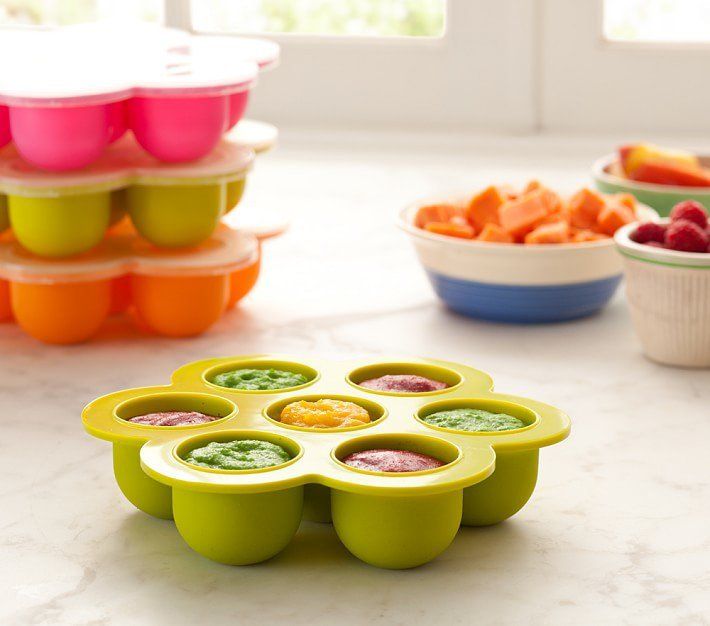
If making the puree with blueberries, strawberries, peaches, kiwi, pineapple, mango, or beans, add ¼ cup water and blend, adding more water as desired to make a thin, very smooth puree. If making avocado or banana, just blend (without water) until very smooth.
Serve or store in an airtight container for 3-5 days in the fridge, or up to 3 months in the freezer.
Vitamix Blender
Storage Containers
Silicone Ice Cube Tray
- Use at least 1 cup base ingredient to ensure that a blender has enough volume to blend well.
- Thin any homemade puree with water, formula, or breast milk.
- Freeze any baby food you won't use within 3 days in an ice cube tray. Transfer frozen cubes into freezer storage bags for up to 3 months. Thaw these frozen baby food recipes in an airtight container in the fridge overnight before you plan to serve.
- Taste all fresh foods for sweetness and to ensure that your puree isn't too tart.
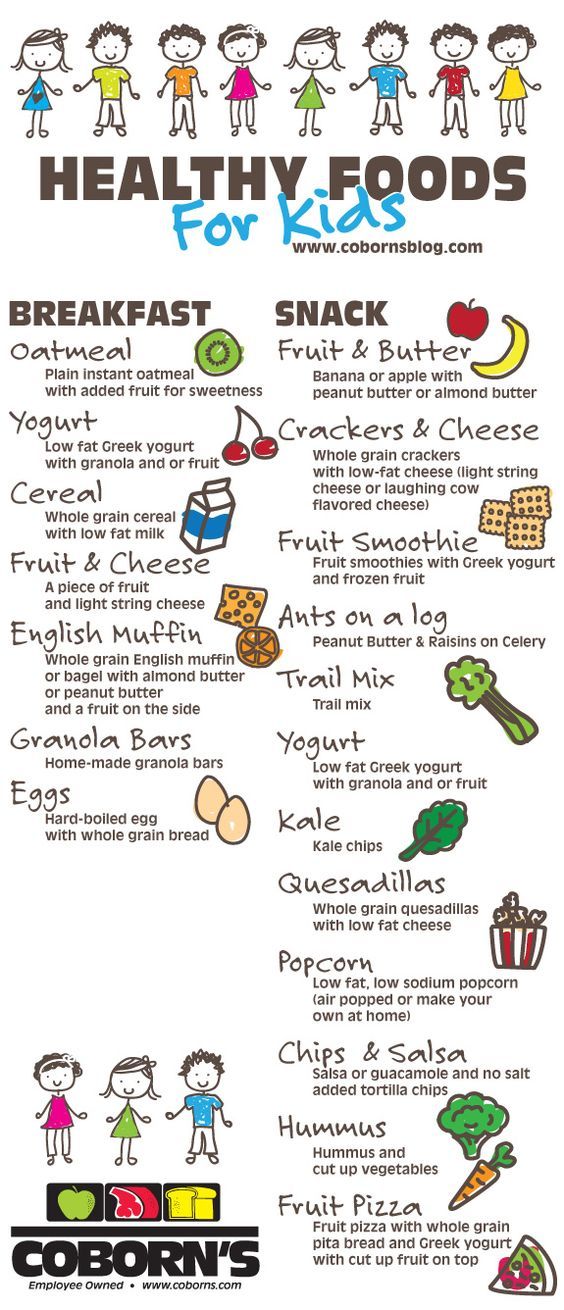 To tame tartness, mix any puree with Banana Puree , Avocado Puree, Applesauce, or Mashed Sweet Potato.
To tame tartness, mix any puree with Banana Puree , Avocado Puree, Applesauce, or Mashed Sweet Potato. - If you want to add fat or protein to any of these fruit or veggie purees, simply stir in a little whole milk yogurt, coconut cream, or Avocado Puree.
- Use breastmilk or formula in place of the water if desired.
- Mix two purees together for more complex flavors.
- Add texture to any puree by stirring in baby oatmeal or hemp seeds.
- For more details on each of these, find them here: Avocado Puree; Banana Puree, Bean Puree; Blueberry Puree, Kiwi Puree, Mango Puree, Pineapple Puree, Peanut Butter Puree, Peach Puree, Strawberry Puree
Serving: 0.25cup, Calories: 42kcal, Carbohydrates: 11g, Protein: 1g, Fat: 1g, Saturated Fat: 1g, Polyunsaturated Fat: 1g, Monounsaturated Fat: 1g, Sodium: 1mg, Potassium: 57mg, Fiber: 2g, Sugar: 7g, Vitamin A: 40IU, Vitamin C: 7mg, Calcium: 4mg, Iron: 1mg
Tried this recipe?Rate in the comments and tag @yummytoddlerfood on IG!
Easy Avocado Puree (with Tips to Prevent Browning)
byAmy Palanjian
Updated
This post may contain affiliate links. If you shop from one of our links, we may earn a commission.
If you shop from one of our links, we may earn a commission.
Learn how to make SO EASY avocado puree for your baby—and the best way to prevent it from browning so you can store leftovers for later.
Avocado Puree
Avocado is a favorite first food for baby since it’s not very likely to be allergenic, has lots of healthy fats, and has a silky texture that’s great for new eaters. I love making avocado puree to share with baby since there’s no cooking involved and it’s so super easy to do with either a blender or a fork!
Ingredients You Need
To make this avocado puree, you’ll just need ripe avocado and a fresh lemon, if you plan to store some for later. So easy!
How to Choose a Perfect Avocado
Look for an avocado that’s firm to the touch but has a little give, which indicates ripeness. A very soft avocado may be too ripe with brown spots by the time you get it home and eat it. So it shouldn’t feel as hard as a rock, but firm with a little softness.
Step by Step Instructions
Here’s a look at the easy process involved in making this homemade baby food.
- Halve a ripe avocado, remove the pit, and scoop out the flesh.
- Add to a blender.
- Blend, adding breastmilk, formula, or water if needed or desired to thin.
- Serve immediately.
TIP: This is a great puree to share with baby, so if you plan to have some, skip adding breastmilk or formula.
How to Store Avocado Puree for Later
To store in the fridge, place puree into small food storage containers and squeeze fresh lemon juice over top. You’ll want any exposed part of the puree to be in contact with some lemon juice to prevent browning.
To freeze, stir 1 tablespoon fresh lemon juice into the mash and spoon into an ice cube tray. Freeze. Transfer frozen cubes into a freezer storage bag for up to 3 months. Thaw overnight in the fridge in an airtight container. (You can also freeze directly in a freezer bag.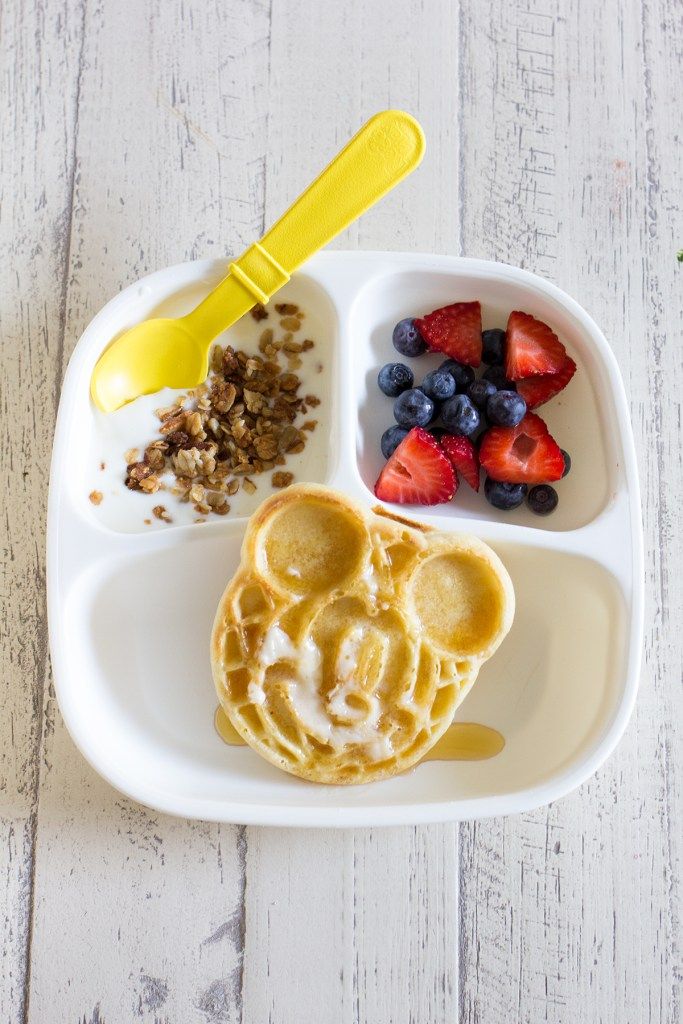 )
)
Tips for Making the Best Avocado Puree
- To do this with a fork, place as much or as little avocado onto a plate. Mash with a fork to reach the desired consistency, thinning with water, breastmilk or formula as desired.
- To store in the fridge, place puree into small food storage containers and squeeze fresh lemon juice over top. You’ll want any exposed part of the puree to be in contact with some lemon juice to prevent browning.
- To freeze, stir 1 tablespoon fresh lemon juice into the mash and spoon into an ice cube tray. Freeze. Transfer frozen cubes into a freezer storage bag for up to 3 months. Thaw overnight in the fridge in an airtight container. (You can also freeze directly in a freezer bag.)
- Leave as a thicker mash for older babies.
- Spread onto toast sticks (about the size of your finger) for BLW-style feeding or offer a preloaded spoon.
- Mix with Banana Puree, Sweet Potato Puree, Pureed Beans, Apple Puree, or any other food you like.

- See more of my favorite baby food combinations here.
I’d love to hear what you think of this recipe if you try it so please comment below with feedback!
Prep Time 5 minutes
Cook Time 0 minutes
Total Time 5 minutes
Author Amy Palanjian
Cuisine American
Course Baby Food
Calories 80kcal
Servings 8
- ▢ 2 ripe avocados (about 1 cup avocado flesh)
Cut the avocado in half and scoop out the flesh. You'll need at least 1 cup to do this in a blender.
Add to a blender. Start on low and blend smooth, adding a little water, breastmilk, or formula as needed to thin and create a smooth consistency.
Serve immediately.
To store, place puree into small food storage containers and squeeze fresh lemon juice overtop. You'll want any exposed part of the puree to be in contact with some lemon juice to prevent browning.
- To do this with a fork, place desired amount of avocado onto a plate.
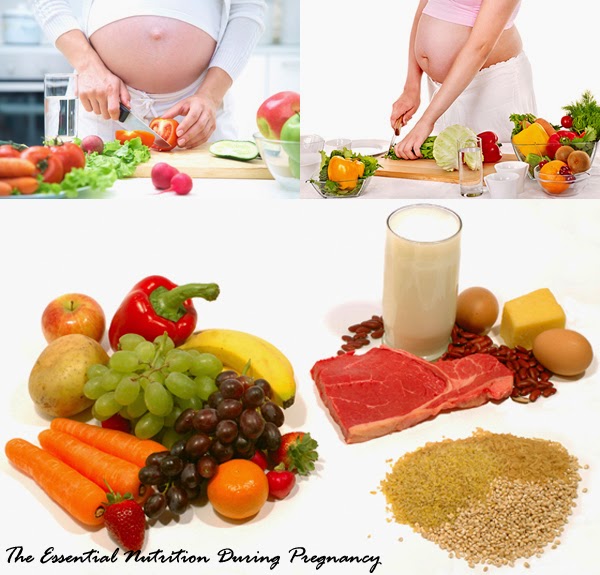 Mash with a fork to reach the desired consistency, thinning with water, breastmilk, or formula as desired.
Mash with a fork to reach the desired consistency, thinning with water, breastmilk, or formula as desired. - To freeze, stir 1 tablespoon fresh lemon juice into the mash and spoon into an ice cube tray. Freeze. Transfer frozen cubes into a freezer storage bag for up to 3 months. Thaw overnight in the fridge in an airtight container. (You can also freeze directly in a freezer bag.)
- Leave as a thicker mash for older babies.
- Spread onto toast sticks (about the size of your finger) for BLW-style feeding or offer a preloaded spoon.
- Mix with banana puree, sweet potato puree, pureed beans, or any other food you like.
Serving: 2tbsp, Calories: 80kcal, Carbohydrates: 4g, Protein: 1g, Fat: 7g, Saturated Fat: 1g, Polyunsaturated Fat: 1g, Monounsaturated Fat: 5g, Sodium: 4mg, Potassium: 244mg, Fiber: 3g, Sugar: 1g, Vitamin A: 73IU, Vitamin C: 5mg, Calcium: 6mg, Iron: 1mg
Tried this recipe?Rate in the comments and tag @yummytoddlerfood on IG!
Related Posts
Related Products
Dinnertime SOS
Buy Now
Happy Family Meals (Meal Plans)
Buy Now
Happy Family Meals (Vol 2)
Buy Now
Yummy Toddler Snacks
Buy Now
Share it with the world
FacebookTweetPinFiled Under
Baby food at home: recipes, video
Growing up a little person is a delightful process that cannot but please the parents of the crumbs. However, the first feeling that mom and dad face when it comes time to introduce complementary foods into a child's diet is confusion.
However, the first feeling that mom and dad face when it comes time to introduce complementary foods into a child's diet is confusion.
Which food is the most healthy, hypoallergenic and delicious? Most often, the first "real" meal of the crumbs after mother's milk and formula is vegetable or fruit puree. The choice of baby food on store shelves is very wide - each manufacturer tries to convince the buyer that jars with beautiful labels contain only natural products, there are no dyes, sweeteners and other harmful additives. A variety of "meals" for babies in factory packaging marked "3+ months." does not guarantee the true usefulness of the product that is inside. Every mother understands that complementary foods prepared on her own, from natural products, are much better for her child.
Another advantage of making your own baby food is that you can choose the best ingredients, wash fruits, berries or vegetables thoroughly, peel them well and remove damaged parts. In addition, the parents of the crumbs themselves can choose the way - how best to cook baby food: food can not only be boiled, but also baked in the oven or cooked in a double boiler.
In addition, the parents of the crumbs themselves can choose the way - how best to cook baby food: food can not only be boiled, but also baked in the oven or cooked in a double boiler.
It is also important that home-made baby puree is much tastier, it will undoubtedly be useful for a growing body and will not cause allergies! Even the simplest children's dish, prepared by mom, keeps the warmth of caring hands and cannot be compared with expensive dishes from the store.
What should be the correct complementary foods for children? Of course, you should start with one ingredient (such purees are called one-component purees), then move on to more complex options. Experts emphasize that the most suitable product for the first "dish" is zucchini. Cauliflower can also be considered neutral. Gradually it will be possible to introduce carrots, pumpkins, potatoes, broccoli and green peas. At the first stage of the introduction of complementary foods, it is better to give preference to vegetable purees and switch to fruit purees when the child already treats “serious” food well.
The basic rules and principles of preparing high-quality baby food yourself:
- it is best to take fresh products for preparations: fruits from the tree, berries from the bush and vegetables from the garden are much healthier than those that have already been in the refrigerator for a week. If there are no seasonal vegetables at the time of preparation, the use of frozen foods is acceptable, but in this case, try to give preference to whole fruits - they retain the greatest amount of nutrients;
- only filtered water should be used for cooking vegetables;
- the preparation of baby food requires, if not separate dishes, then thoroughly washed. Do not, for example, cut vegetables on a meat board. If there is a dog or cat in the house, then you need to restrict her access to the kitchen when food is being prepared;
- It is not recommended to use vegetables and fruits in the diet of infants, in which the content of chemical additives is consistently high.
 These often include watermelons and melons, beets, spinach and lettuce;
These often include watermelons and melons, beets, spinach and lettuce; - It is better to soak vegetables purchased on the market with water before cooking: put carrots, potatoes, zucchini and cauliflower in filtered water for a couple of hours - this will remove nitrates;
- do not leave excess mashed potatoes for the next meal: the child should be given only freshly prepared food, and "yesterday's" mashed potatoes are best eaten by adults or given to pets;
- you can choose cream, boiled egg yolk, grated cheese or finely chopped dill as an additive to puree - this will diversify dishes for children from 8 months;
- try it! Children's food can and should be enjoyed by an adult.
There is another question that often worries parents: is it permissible to preserve baby puree and how to do it correctly? After all, such complementary foods for the developing body of a small child must be prepared daily for one or even two or three years: until the baby is ready to eat adult food from the common table. Not every mother has the time and opportunity to prepare baby puree daily, but you don’t want to buy food for the baby in the store. In addition, it is obvious that in the winter-spring period it is almost impossible to find fruits and vegetables grown without the addition of chemicals. The answer to the question is quite simple: the requirements for the conditions for preparing baby food are very strict (keeping the temperature, sterilizing jars, etc.), but using an autoclave solves all problems: all that is required is to load jars with blanks into the autoclave for 20 minutes and set temperature 120 degrees. After cooling, it is better to store baby food in a dark, cool place for about 12 months, daily delighting the child with homemade homemade food.
Not every mother has the time and opportunity to prepare baby puree daily, but you don’t want to buy food for the baby in the store. In addition, it is obvious that in the winter-spring period it is almost impossible to find fruits and vegetables grown without the addition of chemicals. The answer to the question is quite simple: the requirements for the conditions for preparing baby food are very strict (keeping the temperature, sterilizing jars, etc.), but using an autoclave solves all problems: all that is required is to load jars with blanks into the autoclave for 20 minutes and set temperature 120 degrees. After cooling, it is better to store baby food in a dark, cool place for about 12 months, daily delighting the child with homemade homemade food.
Pumpkin puree: tender and fragrant
Pumpkin is a tasty vegetable that is good for babies. This fruit has a beneficial effect on digestion, is well absorbed by the child's body and is rich in various vitamins: A, C, B, B2, E, PP, T. In addition, the carotene content in pumpkin is 5 times higher than in carrots!
In addition, the carotene content in pumpkin is 5 times higher than in carrots!
Baby pumpkin puree has a sweet taste, so the kids eat this dish with great pleasure. For preparations, it is better to buy small whole pumpkins, as they usually taste better than large ones and are easier to peel.
- Rinse pumpkin well under running water, peel, cut in half, remove seeds.
- Then it is necessary to cut the fruit into small cubes, place in a saucepan and cover with water. Cooking time after boiling - 20 minutes. You can also steam pumpkin: it will retain more nutrients with the same cooking time.
- The next step is to beat the cooked pumpkin with a blender until the consistency of a gentle puree. If the dish turned out to be thick, add water or milk (milk mixture).
- Vegetable oil and salt are added to pumpkin puree to taste, but these additives should be used with caution: only if they are acceptable for the age of the child.
For babies older than 8 months, pumpkin puree is supplemented with other fruits and vegetables, and also added to porridge.
Broccoli puree: simplicity and elegance
Broccoli is not just cabbage, but a storehouse of vitamins and microelements! Beautiful on the outside and fantastic on the inside - the high content of protein and vitamin C (there is more in broccoli than in citrus!) deserves special attention. There are many articles on the Internet about the benefits of broccoli, and preparing this product is not at all difficult.
To prepare this type of cabbage for baby food, you need to choose the highest quality product: the inflorescences must be unopened, green, moderately elastic.
- Broccoli should be washed, cut into pieces and boiled. Steaming will take 20 minutes, in water - faster: fresh cabbage should be boiled for a little more than 5 minutes, and frozen - at least 10. When cooking, do not pour a lot of water, it should only cover the vegetables a little.
- When the cabbage is cooked, take it out, transfer it to a blender bowl and grind to a puree state, add a little warm boiled water.

- Add salt and butter to taste.
Pear puree: a fragrant dessert
It's no secret that babies love fruit puree - almost all children like sweet dishes. The pear is a suitable option for the first one-component fruit food - a sweet fragrant fruit that has a high concentration of vitamins, stimulates digestion and almost never causes allergies.
If you want to cook a safe puree for your child at home, then it is best to choose green pears, these are the fruits that are considered to be the least allergenic.
- Fruit must be peeled, core removed with seeds, cut into cubes.
- Transfer the pear to a heavy-bottomed enamel saucepan, add a little water and simmer over low heat for 15-20 minutes.
- Then transfer to a blender bowl and puree until smooth. If the puree is too thick, add a little warm boiled water.
- You can dilute the dish with milk or formula - it depends on the taste preferences of the baby.
The same recipe is used for applesauce.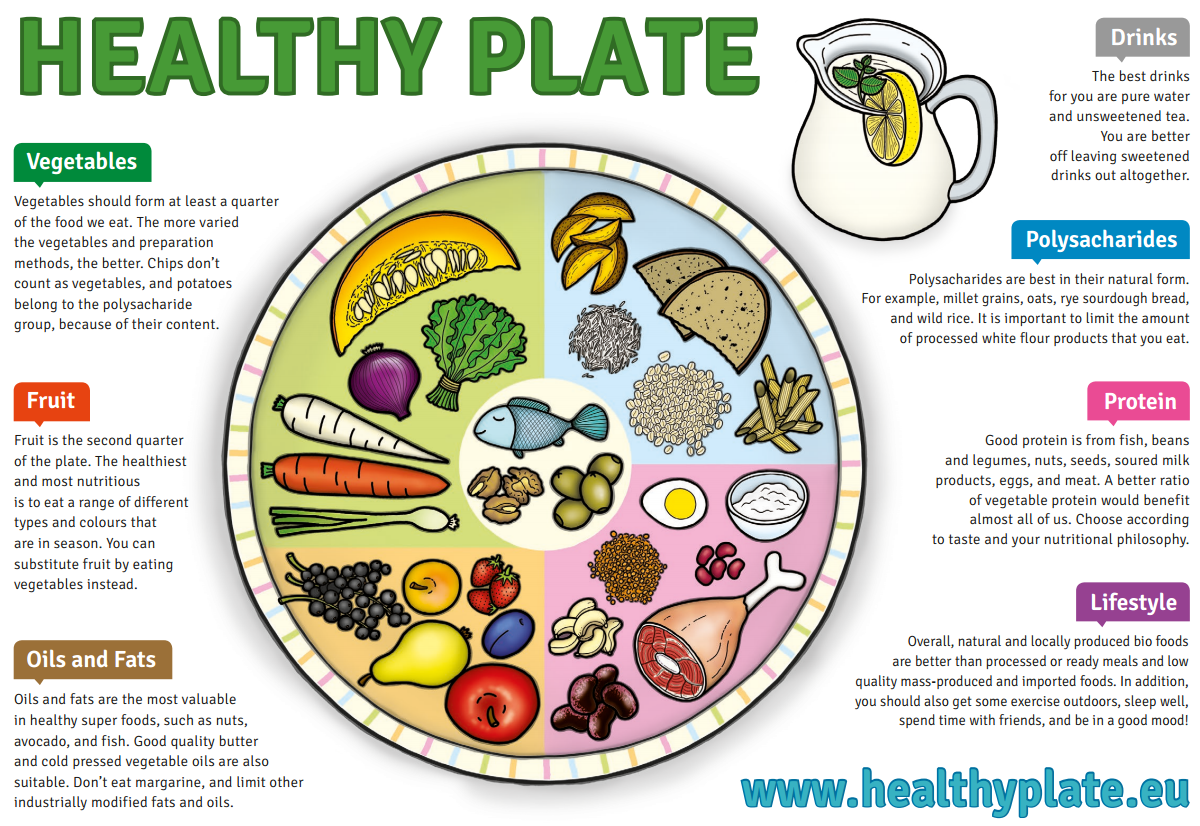 In the future, try to combine these two fruits in one dish.
In the future, try to combine these two fruits in one dish.
Classic apple-zucchini puree
A good appetite of a baby pleases every mother, but little gourmets are often capricious, and it is not easy to please them. Zucchini and apple puree is a classic combination of products that will diversify the baby's menu already in the fifth or sixth month of life.
This complementary food contains only hypoallergenic products, has a positive effect on the functioning of the heart, and stimulates the strengthening of the immune system.
- Selected products should be thoroughly washed, peeled, core removed from apples.
- Cut zucchini and apples into cubes, put fruits in a cooking pot first - they should cook for 5 minutes longer, and then vegetables. The total cooking time is 20 minutes.
- When the food becomes soft, it is necessary to grind it to a puree state using a blender.
- To taste - dilute with water, add salt, oil.

This puree can be considered an independent dish for the little ones or become a delicious side dish for older kids.
Colorful carrot and potato puree
For many parents, carrots and potatoes are the easiest and most understandable type of complementary food for the baby. However, if you cook and serve standard products a little differently than usual, you can improve the traditional taste of a classic dish.
For baby puree, young potatoes should not be chosen - they contain a lot of starch. Carrots, on the contrary, it is better to buy young ones.
- Wash and peel the vegetables thoroughly and cut into cubes.
- It is better to steam the mashed potatoes and carrots, the vegetables should be boiled separately. Cook until tender, 20 minutes on average.
- Separately puree the vegetables in a blender, diluting with warm water if needed.
Both types of puree are beautifully placed on a plate without mixing: the child can decide for himself whether to mix food or eat separately.
Exotic variety: mango puree
Tropical fruits should not be offered to a small child before the age of 7-8 months and only if there was no allergy to other foods.
Mango is an aromatic fruit with an original pleasant taste. This fruit helps to overcome colds, reduce inflammation in the body, improve sleep and normalize the functioning of the stomach.
To feed the baby, ripened fruits should be selected - quite soft, yellow-red in color.
- Fruit should be peeled and pitted, cut into cubes.
- Put the raw mango into a blender, purée, transfer to a heavy-bottomed pot and boil for a few minutes.
Older children may be offered uncooked mango puree. This fruit is completely independent - no need to add sugar or water!
Sweet pumpkin puree with apple
This puree is called sweet, since both pumpkin and apples are foods with sufficient sugar content. Such a dish is well suited as a dessert for children who already eat “serious” food well - vegetable purees and cereals.
In addition, such complementary foods are a great option for the autumn-winter period: seasonal products contain enough choline, a lot of fiber, natural proteins and vitamins (groups A, B, C, E, etc.), zinc, sodium, calcium and only!
- Pumpkins and apples must be peeled, peeled and seeds removed, cut into cubes and sent to a double boiler.
- Cook for about 20 minutes until the food is soft. Then place them in a blender bowl, add raisins and chop. If the child chews well, mash everything with a fork, and leave the raisins whole.
Hearty puree with celery and turkey
For older kids, meat is added to vegetable dishes - turkey fillet is an excellent option for developing a child's taste preferences. Appetizing and fragrant meat puree includes only three ingredients: celery root, turkey fillet, butter.
The proportion of meat and celery should be approximately 10:1, the amount of butter to your taste.
- The turkey fillet must be boiled in the "second stock" for about 20 minutes after boiling.

- Wash, peel and cut the celery root into cubes and put into the boiling broth 10 minutes before it is done.
- After cooking, puree the turkey and celery with a blender, adding stock if necessary.
- Salt to taste and add oil. For one children's serving, 3-5 grams of butter is enough.
A child from early childhood will begin to get used to full-fledged homemade food without the addition of preservatives and harmful components, and will grow up healthy and strong. In summer and autumn, parents can make preparations: prepare potatoes, carrots, beets, pumpkins and apples for storage (these products are stored for a long time - they do not need to be frozen), freeze berries and seasonal fruits, or roll ready-made mashed potatoes into jars! Homemade baby food without unnecessary flavor enhancers and salt is the best complementary food, warmed by mom's love.
14 Best Baby Food Manufacturers
14 Best Baby Food Manufacturers - Rating 2023 Properly selected baby food is the key to a happy and healthy life for the baby and peace of mind for parents. The main feature of baby food is the soft texture of food, which allows a small person to easily enjoy a variety of products suitable for a certain age range. Baby food is divided into milk formulas and complementary foods. The first option is as close as possible in composition to mother's milk: in such mixtures the protein concentration is lowered, the necessary amino acids, prebiotics, vitamins and minerals are present.
The main feature of baby food is the soft texture of food, which allows a small person to easily enjoy a variety of products suitable for a certain age range. Baby food is divided into milk formulas and complementary foods. The first option is as close as possible in composition to mother's milk: in such mixtures the protein concentration is lowered, the necessary amino acids, prebiotics, vitamins and minerals are present.
As the child grows older, the percentage of protein in the milk formula increases, useful microelements such as iron, calcium and zinc are added. As for complementary foods, they begin to introduce it into the daily diet of a baby at the age of 4-6 months. Vegetable puree or gluten-free cereals are often used as the first food.
This ranking will consider 14 proven baby food options from reliable manufacturers. Here you can certainly find useful and up-to-date information regarding this topic.
Main parameters when choosing:
First of all, it is worth mentioning that the selection of baby food should correspond to the age of the baby. If you have any doubts, we strongly recommend that you consult your doctor.
If you have any doubts, we strongly recommend that you consult your doctor.
- Composition
- Species
Composition
Whatever type of baby food you choose for your baby, you need to carefully study the composition of the product for the presence of potentially allergenic components. Here are the key points to which you should pay special attention:
- No palm oil. This component is quite common in infant formulas, but it interferes with the absorption of calcium, and can also cause problems in the functioning of the gastrointestinal tract, which will affect the well-being of the baby as a whole.
- Proteins. The ratio of two types of protein is important here: proteins and casein. Only with the right ratio of products will positively affect the health of the child.
- Accessories.
 These include lutein, probiotics, nucleotides. Lutein, for example, protects the baby's vision from exposure to ultraviolet rays, nucleotides contribute to the growth of the necessary bifidobacteria in the baby's intestines.
These include lutein, probiotics, nucleotides. Lutein, for example, protects the baby's vision from exposure to ultraviolet rays, nucleotides contribute to the growth of the necessary bifidobacteria in the baby's intestines.
- Presence of vitamins and minerals. Based on the age of the child, it is necessary to select products enriched with the necessary elements that will support the child's immunity, protecting him from various diseases.
In any case, parents should carefully observe the reaction of the child's body to the introduction of a particular product into the diet.
- Kashi. This is an excellent option for the first complementary foods, since cereals contain the optimal amount of carbohydrates, vegetable proteins, fats and minerals. Porridge helps to improve the process of digestion of the baby. Initially, it should be gluten-free and dairy-free products, then you can gradually introduce cereals that contain milk, gluten, and even multi-grain products.

- Meat purees. Such products are saturated with protein, B vitamins, iron, zinc and magnesium. Such nutrition begins to be introduced into the baby's menu at about the age of six months. At the first stage, it can be mashed rabbit or turkey, with a positive reaction of the body, you can begin to offer the baby veal and beef products.
- Vegetable puree. It can be mashed carrots, pumpkins, potatoes, etc. Initially, it is recommended to try mashed broccoli, zucchini or cauliflower. Vegetable products are rich in carbohydrates, pectin, vitamins and minerals, organic acids, and beta-carotene.
- Fruit puree. The main feature of children's fruit purees is the presence of natural sugars in the composition, which is very attractive to kids. Also, fruit purees are saturated with various vitamins and minerals necessary for a child, and fiber in the composition contributes to optimal bowel function. At the same time with this product, fruit juices can be introduced into the diet.

- Fish puree. Such a product is recommended to be offered to a child only from 8-9 months. Such purees include a large amount of protein, B vitamins, and fatty acids.
Find out where the cheaper is >>>
-
8. Agusha puree chicken
Find out where the cheaper is >>>
9000 9. Heinz Military Greek with Chernsliva Find out where the cheaper is >>>
13. Little happiness of apple-Banan
Learn, where is it cheaper in total >>
9,000314. Fleur Alpine multi-cereal porridge
0039
Milk buckwheat porridge with prunes from the Russian manufacturer Babelac Gold, which does not require cooking, is an excellent option for feeding babies from the age of 4 months.
 This product does not contain artificial colors, preservatives, salt or palm oil. It is made on the basis of buckwheat flour, milk base, and also includes a mixture of vegetable oils, sugar, etc. The product is stored in a soft sealed package (200 g). Porridges from this manufacturer delight the child with a rich, pleasant taste, while supporting his immunity, strengthening bones, enriching the body with essential vitamins and minerals, natural cereals and milk.
This product does not contain artificial colors, preservatives, salt or palm oil. It is made on the basis of buckwheat flour, milk base, and also includes a mixture of vegetable oils, sugar, etc. The product is stored in a soft sealed package (200 g). Porridges from this manufacturer delight the child with a rich, pleasant taste, while supporting his immunity, strengthening bones, enriching the body with essential vitamins and minerals, natural cereals and milk. https://rating-best.rf/rejtingi/luchshie-proizvoditeli-moloka/
PLUSES AND MINUSES
- Safe composition.
- Does not require cooking.
- Not found.
https://rating-best.rf/rejtingi/luchshie-proizvoditeli-moloka/
2. Nestle wheat milk porridge
porridge from Nestle with pieces of apple and strawberry. At this age, the baby can already cope with small soft pieces of food. The big advantage of this option is the hypoallergenic composition, which does not include artificial flavors and dyes, palm oil.
 All this makes the product as safe as possible for a growing organism. The porridge is made from wheat flour, skimmed milk powder, a mixture of vegetable oils, apple slices and garden strawberries. Also, the product formula contains elements such as vitamins C, E, B5, B1, B2, D. Bifidobacteria help to improve the functioning of the child's digestive system. The soft pack contains 200 g of the product.
All this makes the product as safe as possible for a growing organism. The porridge is made from wheat flour, skimmed milk powder, a mixture of vegetable oils, apple slices and garden strawberries. Also, the product formula contains elements such as vitamins C, E, B5, B1, B2, D. Bifidobacteria help to improve the functioning of the child's digestive system. The soft pack contains 200 g of the product. Nestle milk wheat porridge
PROS AND CONS
- Hypoallergenic composition.
- The product is rich in vitamins.
- Handy packaging.
- Sugar in the formulation.
Nestle wheat milk porridge
3. MAMAKO pear and apple with goat curd
A set of six packs of fruit puree from the Belarusian manufacturer MAMAKO is intended for use by children from 6 months. Multi-component apple-pear puree with goat curd is ideal for continuing complementary feeding. The product does not include GMOs, artificial flavors, colors, preservatives, sugar and starch in its formula.
 The natural composition contributes to the easy and rapid absorption of puree in the child's body. One soft pack contains 120 g of product. This is the optimal value for the timely use of the product by the child. Such packages are great for eating while walking.
The natural composition contributes to the easy and rapid absorption of puree in the child's body. One soft pack contains 120 g of product. This is the optimal value for the timely use of the product by the child. Such packages are great for eating while walking. MAMAKO pear and apple with goat curd
PLUS AND MINUS
- Natural composition.
- Does not contain sugar.
- Handy packaging.
- Specific curd taste.
MAMAKO pear and apple with goat cheese
4. Gerber milk porridge Multicereal
Gerber is a well-known and time-tested Russian manufacturer of baby food, which is responsible for the quality of its products. At this position of the rating, milk multi-cereal porridge with blueberries and banana is presented. Such a product is recommended to be given to babies who have reached the age of six months. The undoubted advantage is that porridge does not require cooking and saves parents time.
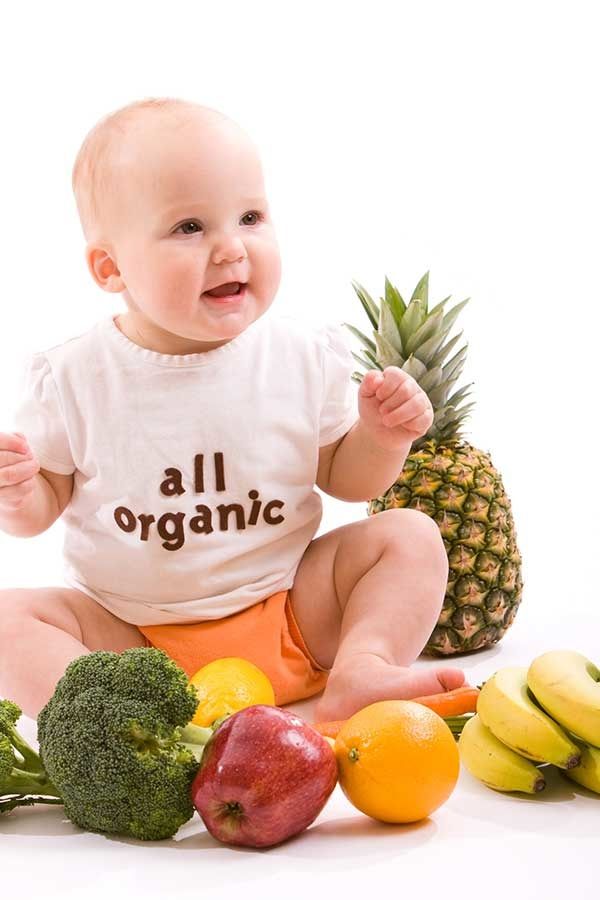 The composition does not contain GMOs, artificial flavors and colors, sugar and palm oil. An environmentally friendly carton contains 180 g of product. The porridge formula includes wheat flour with gluten content, as well as oatmeal, rice and corn flour. Milk multi-cereal porridge Gerber is suitable for introducing your baby to cereals.
The composition does not contain GMOs, artificial flavors and colors, sugar and palm oil. An environmentally friendly carton contains 180 g of product. The porridge formula includes wheat flour with gluten content, as well as oatmeal, rice and corn flour. Milk multi-cereal porridge Gerber is suitable for introducing your baby to cereals. Gerber milk porridge Multicereal
PROS AND CONS
- Safe product formula.
- Does not contain sugar.
- Multigrain product.
- Eco-friendly packaging.
- Not found.
Gerber milk porridge Multicereal
5. Sady Pridonya apple puree
Another reliable manufacturer of high-quality and safe baby food is the Russian brand Sady Pridonya. Here we will consider a set of one-component applesauce from this manufacturer. The set contains 18 product cartons (each weighing 125 g). It is recommended to offer such food to babies from 4 months. The soft consistency is absolutely safe for the child, because it does not include lumps.
 For the preparation of this natural puree, ripe green Don apples are used, rich in natural elements, vitamins and minerals, so necessary for a small organism. Apple pectin is responsible for the prevention of disorders in the digestive system. The composition does not contain allergenic components.
For the preparation of this natural puree, ripe green Don apples are used, rich in natural elements, vitamins and minerals, so necessary for a small organism. Apple pectin is responsible for the prevention of disorders in the digestive system. The composition does not contain allergenic components. Sady Pridonya puree apple
PLUSES AND MINUSES
- Natural composition.
- Soft smooth consistency.
- Many packs in a set.
- Too thin.
Sady Pridonya apple puree
6. Tyoma beef puree
Acquaintance with meat products is a very responsible step towards the development of children's diet. It is recommended to introduce such dishes at the age of six months, when the body is already ready for a new stage. This set includes six packs of beef puree, each containing 90 g product. This amount is enough for the first entry in the child's menu. Tin packaging ensures a long shelf life of puree.
 The multi-component composition includes not only beef, but also rice. The composition does not contain GMOs, artificial flavors and colors, sugar, starch, salt, soy, eggs and palm oil, which minimizes the possibility of allergic reactions of the growing organism.
The multi-component composition includes not only beef, but also rice. The composition does not contain GMOs, artificial flavors and colors, sugar, starch, salt, soy, eggs and palm oil, which minimizes the possibility of allergic reactions of the growing organism. Dark beef puree
PROS AND CONS
- Safe composition.
- Strong sealed package.
- Kids love the taste.
- Liquid consistency.
Tyoma beef puree
7. MAMAKo buckwheat porridge with goat milk
The seventh position in the rating is buckwheat porridge with goat milk from MAMAKo. This low allergenic product is ideal for the first feeding. Porridge does not require cooking and is suitable for consumption by children from 4 months. The product does not contain potentially hazardous substances (such as GMOs, artificial flavors and dyes, thickeners, sugar, etc.). The porridge is in an environmentally friendly cardboard package. One package contains 200 g of the product.
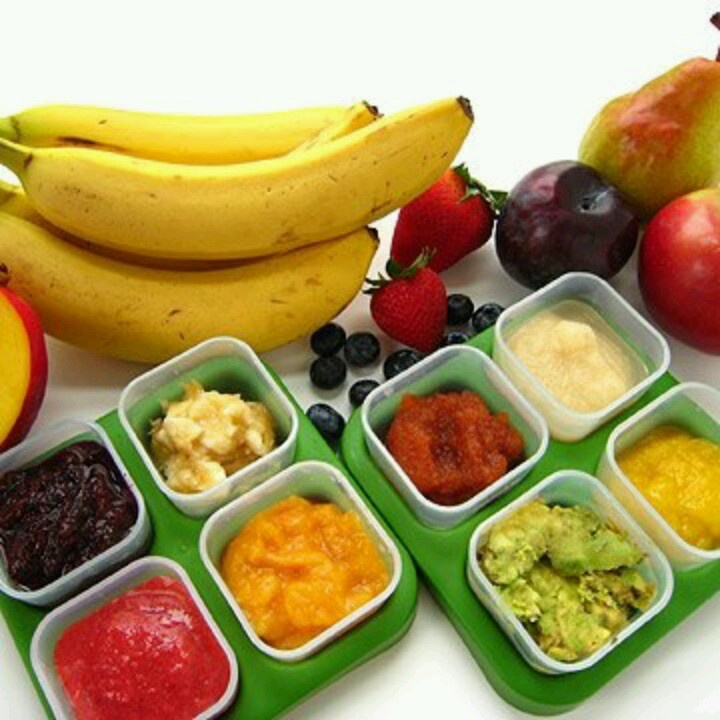 In addition to buckwheat flour and goat milk, the formula contains vitamins A, D, E, K, C, B1, B2, B6, biotin, etc. Such a combination of components provides the baby with all the necessary nutrients, satisfying the feeling of hunger and having a positive effect on the health of the body.
In addition to buckwheat flour and goat milk, the formula contains vitamins A, D, E, K, C, B1, B2, B6, biotin, etc. Such a combination of components provides the baby with all the necessary nutrients, satisfying the feeling of hunger and having a positive effect on the health of the body. MAMAko buckwheat porridge with goat milk
PLUSES AND MINUSES
- Natural composition.
- Uniform consistency.
- Does not require cooking.
- Safe packaging.
- Large flow.
MAMAko buckwheat porridge with goat's milk
8. Agusha chicken puree
Another option for meat baby food is a multi-component chicken puree with rice from the famous Russian manufacturer Agusha. The set includes 8 glass jars of 80 g each. Such food is recommended to be introduced into the diet of a baby from the age of six months. The big advantage of this puree is the absence of artificial flavors, salt, sugar, soy and starch in the composition.
 At the same time, mashed potatoes are made from high-quality and certified meat. The energy value of the product in question is 110 kcal per 100 g of puree, which is the optimal value for the growing body of the baby.
At the same time, mashed potatoes are made from high-quality and certified meat. The energy value of the product in question is 110 kcal per 100 g of puree, which is the optimal value for the growing body of the baby. Agusha chicken puree
PROS AND CONS
- Well-known and proven manufacturer.
- Safe packaging.
- Uniform consistency.
- High quality workmanship products.
- Expensive.
Agusha chicken puree
9. Heinz buckwheat milk porridge with prunes
Buckwheat milk porridge from the Heinz brand is a healthy product that will surely appeal to the baby, since prunes are added to the sweet porridge, which brings a juicy note to the product. Such nutrition can be introduced into the children's menu, starting from the age of 4 months. One package contains 200 g of a mixture for making porridge, despite the fact that it does not require cooking. The balanced composition includes the necessary and healthy cereals and juicy fruits, which will impress any child.
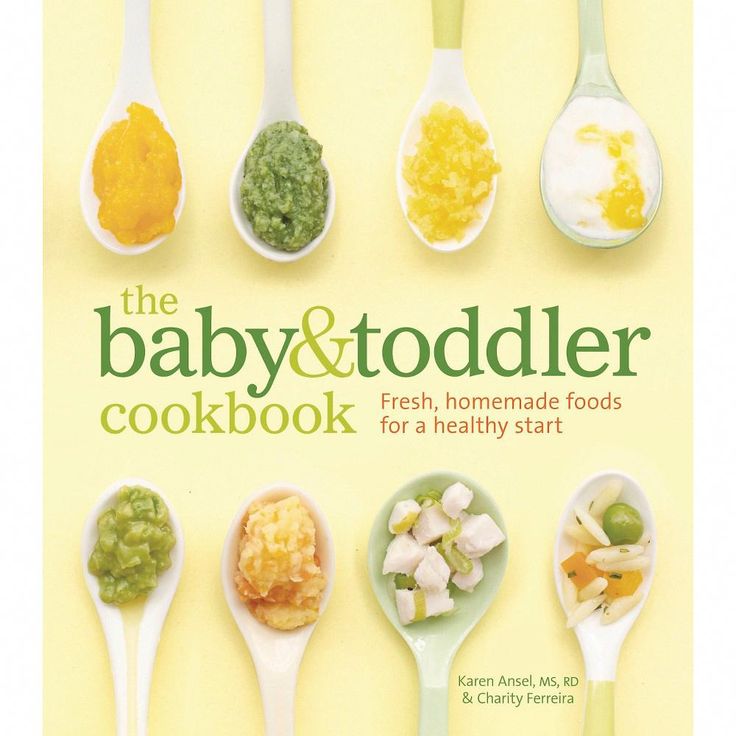 The composition does not contain artificial flavors and dyes, salt, thickeners and palm oil, which means that the risk of allergic reactions is minimized. Also, the formula of the product rating considered at this position includes Omega-3 for optimal brain development, important prebiotics for the full functioning of the digestive system, as well as vitamins and minerals that positively affect the condition of the baby as a whole.
The composition does not contain artificial flavors and dyes, salt, thickeners and palm oil, which means that the risk of allergic reactions is minimized. Also, the formula of the product rating considered at this position includes Omega-3 for optimal brain development, important prebiotics for the full functioning of the digestive system, as well as vitamins and minerals that positively affect the condition of the baby as a whole. Heinz buckwheat milk porridge with prunes
PLUSES AND MINUSES
- Rich composition.
- No harmful ingredients.
- Affordable price.
- Does not require cooking.
- Sometimes lumps remain.
Heinz buckwheat milk porridge with prunes
10. Hipp broccoli puree
As mentioned above, vegetable broccoli puree is an excellent solution for the first acquaintance of the baby with a new type of food. Such a puree delicately interacts with the body of a small person.
 Hipp broccoli puree can be introduced into the diet from 4 months. One glass package contains 80 g of puree. The composition did not contain any potentially allergenic components that can have a negative impact on the condition of the baby. The consistency of the product is homogeneous and soft, without the formation of lumps.
Hipp broccoli puree can be introduced into the diet from 4 months. One glass package contains 80 g of puree. The composition did not contain any potentially allergenic components that can have a negative impact on the condition of the baby. The consistency of the product is homogeneous and soft, without the formation of lumps. Hipp broccoli puree
PROS AND CONS
- Suitable for first feeding.
- Natural composition.
- Safe packaging.
- The child does not always like it.
Hipp broccoli puree
11. FrutoNyanya potato carrot puree
For older children (starting from 9 months) a multi-component puree from a reliable Russian manufacturer FrutoNyanya, made from rice, chicken and carrots, is quite suitable. Such a complex lunch will please the child, give him energy and the necessary nutrients. The composition does not contain GMOs, artificial components and preservatives. The consistency of the puree contains small pieces so that the baby learns to develop the chewing function.
 The product in question is enriched with iron: it contains 12% of the daily requirement. The set contains six glass jars, each containing 190 g product.
The product in question is enriched with iron: it contains 12% of the daily requirement. The set contains six glass jars, each containing 190 g product. FrutoNyanya mashed potatoes carrots
PLUSES AND MINUSES
- Useful composition.
- Develops chewing function.
- Large capacity jars.
- Expensive.
FrutoNyanya potato carrot puree
12. Babushkino Lukoshko chicken meat puree with rice
Another version of the multi-component puree is chicken and chicken puree from the Russian manufacturer Babushkino Lukoshko with rice. Such nutrition is recommended to be introduced into the diet of a child from the age of six months. The set includes six glass packs (each weighs 100 g). The product does not contain harmful and potentially allergenic components (GMOs, artificial flavors and colors, soy, sugar, starch and palm oil). The food also includes flour, sunflower oil and water. The energy value of puree is 100 kcal per 100 g.

Babushkino Lukoshko chicken puree with rice
PLUSES AND MINUSES
- Natural composition.
- Pleasant smell.
- Optimal consistency.
- Small can.
Babushkino Lukoshko chicken puree with rice
13. Little happiness apple-banana puree
This set of baby food from a Belarusian manufacturer is great for introducing a baby to similar products, since it includes only three packages. Soft packaging with a resealable lid is very convenient to take with you for a walk. Multi-component apple and banana puree has an unsurpassed taste, a natural composition that does not contain artificial and dangerous components, as well as a wealth of vitamins and minerals, which together have a beneficial effect on the baby's digestive system. The weight of one package is 90 g. It is recommended to introduce into the diet at the age of six months.
Little happiness apple-banana puree
PROS AND CONS
- Convenient packaging.
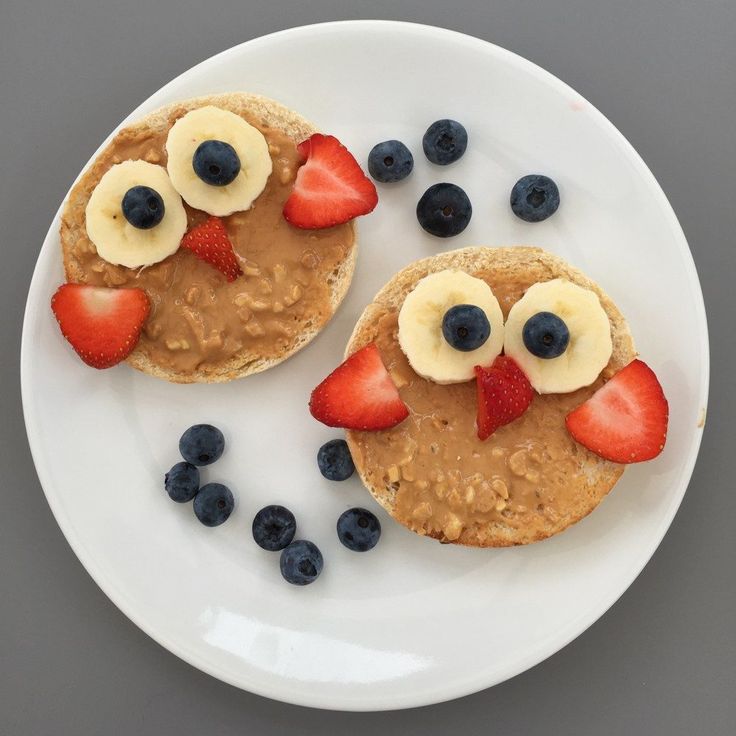
- Natural composition.
- Uniform consistency.
- Puree too thin.
Small happiness puree apple-banana
14. Fleur Alpine multi-cereal porridge
Multi-cereal dairy-free porridge with banana, strawberry, apple, corn balls, oatmeal and spelled flakes from an older manufacturer, of course, recommended for older children from an Austrian manufacturer . The recommended start of introducing such a product into the diet is the age of 15 months. Porridge does not require cooking, which is very convenient for the parents of the child. The composition of the product considered at this position does not contain artificial flavors and dyes, as well as preservatives and sugar. A similar ready-made breakfast can be used for the whole family. The carton contains 200 g of the product.
Fleur Alpine multigrain porridge
PROS AND CONS
- Suitable for the whole family.
- Does not require cooking.

- Natural composition.
- Sticks to teeth.
Fleur Alpine multi-cereal porridge
Rating results
Thus, we were able to consider fourteen modern and proven baby food options from well-known manufacturers. To save you time, we've also prepared summaries of the main review.
1. For older children, Fleur Alpine multi-grain porridge and FrutoNyanya chicken, potato and carrot puree are perfect.
2. Packing convenient for walking is noted in MAMAKO apple-pear puree and Little happiness puree .
3. For the first feeding, the correct solution is to use vegetable broccoli puree from the manufacturer Hipp .
Good luck!
Copywriter of the "Ratings of the Best" channel
April Veresen
12 years in copywriting helped me understand how to choose quality information for the reader.
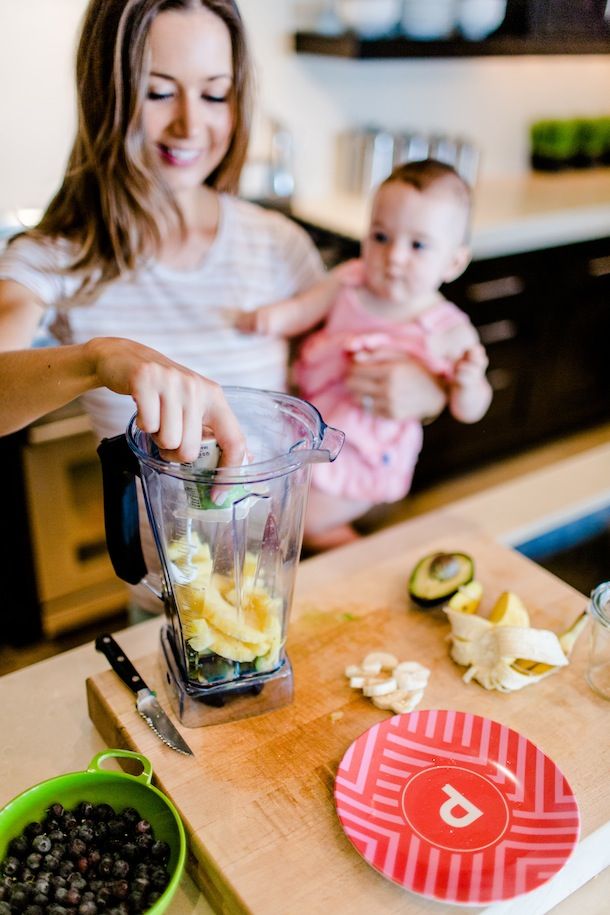
.




